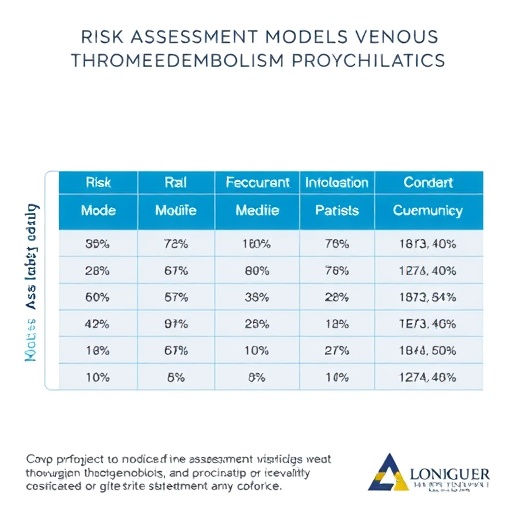In the dynamic landscape of healthcare, the role of critical care providers in managing the mobilization of older adult patients stands at a pivotal crossroads. A recent illuminating study has cast light on the knowledge, attitudes, and self-reported behaviors of critical care nurses and physicians regarding the mobilization of older patients. Transporting elderly individuals, particularly those in vulnerable health states, is not merely a matter of shifting from one location to another; it encapsulates a comprehensive understanding of the physiological, psychological, and social factors at play. This research underscores the urgency of optimizing care practices within geriatric settings, an area often overshadowed yet crucial for enhancing patient outcomes.
Critical care professionals frequently encounter the challenges posed by the unique needs of older adult patients. Age-related physiological changes can complicate the mobilization process, rendering older patients susceptible to increased risk of injury or deterioration if not handled appropriately. While extensive knowledge exists regarding the importance of mobilization in enhancing recovery and preventing complications, the translation of this knowledge into practice remains inconsistent. The new research hones in on these discrepancies, aiming to bridge gaps in understanding and application.
Importantly, mobilization plays a critical role in the recovery trajectory of older patients, impacting overall well-being, functionality, and independence. It’s a fundamental component of rehabilitation that can significantly reduce the incidence of conditions such as pressure ulcers, deep vein thrombosis, and even subsequent hospital stays. Therefore, the study’s exploration into the attitudes and beliefs held by healthcare providers reflects a deeper investigation into how these perceptions can influence daily practices in critical care settings.
Furthermore, the self-reporting nature of the study provides a unique lens through which to assess the realities faced by nurses and physicians. Self-reported behaviors often reveal discrepancies between what providers know and what they practice, hence the critical nature of this investigation. The findings could have profound implications for training and continual education, highlighting the necessity for integrating more robust mobilization strategies into clinical protocols.
As critical care environments strive for greater efficiency and patient safety, this research incentivizes a reevaluation of existing practices. The attitudes of healthcare professionals directly correlate to their actions, suggesting that positive reinforcement and education on the benefits of consistent mobilization could lead to improved patient outcomes. More importantly, addressing any potential barriers—be they systemic, personal, or philosophical—can heighten the efficacy of care delivered to older patients.
Moreover, the complexities of old age often manifest not only in physical health challenges but also in mental and emotional difficulties. Critical care staff must possess an acute awareness of these multifaceted issues and how they influence mobility. The study hints that a flourishing culture of respect, empathy, and understanding among healthcare providers can foster a supportive environment conducive to patient mobilization.
The results from this pivotal research might encourage healthcare institutions to implement targeted strategies aimed at improving the mobilization of elderly patients. By promoting a culture of teamwork and communication among critical care nurses and physicians, hospitals can mitigate the fragmentation of care that often occurs in geriatric health management. Learning sessions, workshops, and mentorship can serve to enlighten staff, galvanizing a more cohesive approach to care delivery.
In evaluating the nuances of the study, it is noteworthy that a major focus remains on creating evidence-based practices that empower healthcare professionals. The study dovetails with a growing body of literature advocating for systematic changes in how care is conceptualized and enacted, particularly in the context of aging. By grounding mobilization strategies in research, practitioners can adopt more effective methods that are proven to enhance patient mobility and health outcomes.
Furthermore, the emphasis on self-awareness within the team highlights an urgent need for ongoing reflection and feedback among staff. Interactive platforms where nurses and physicians can share experiences and suggestions may cultivate a greater understanding of mobilization practices. This shared learning experience can dismantle preconceived notions and foster innovative practices tailored to the complexities of elder care.
In summary, the findings from this study serve as a clarion call for advancing care for older adults through enhanced mobilization practices. As healthcare systems seek to improve the quality of care delivered to geriatric patients, prioritizing the education and support of critical care nurses and physicians is paramount. The synchronization of knowledge and consistent practice could herald a new era of better health outcomes for older adults in critical care settings.
The investigation sheds valuable light on an understudied sector of healthcare, calling for increased emphasis on the mobilization of older adult patients. It serves as a reminder that effective healthcare extends beyond clinical procedures; it is rooted deeply in the attitudes and behaviors of the professionals delivering this care. Recognizing and addressing the intricacies involved in the mobilization of elder patients holds the key not only to enhancing their immediate recovery but also to promoting long-term health and independence.
Strong collaboration among clinicians, healthcare institutions, and policy-makers can lead to substantial advancements in aging care. It is this collective effort that will ensure the voices of older adults resonate in the corridors of healthcare decision-making. As new data emerges, continuous reflection and adaptive practices will remain essential to elevate the standards of care for one of society’s most vulnerable populations.
In conclusion, as society continues to age, understanding and improving mobilization practices must remain at the forefront of critical care training and protocols. The knowledge gleaned from this study not only amplifies the significance of elder care but galvanizes critical reflection and action. Embracing these insights could potentially reshape the future of geriatric care, fostering a environment steeped in knowledge, empathy, and practice aligned with the holistic needs of older adults.
Subject of Research: Mobilizing Older Adult Patients in Critical Care Settings
Article Title: Critical Care Nurses’ and Physicians’ Knowledge, Attitudes, and Self-Reported Behaviors in Mobilizing Older Adult Patients: Implications for Optimizing Geriatric Care
Article References:
Elsayed, S., Ali Ibrahim, A., Alkubati, S. et al. Critical care nurses’ and physicians’ knowledge, attitudes, and self-reported behaviors in mobilizing older adult patients: implications for optimizing geriatric care.
BMC Nurs 24, 1173 (2025). https://doi.org/10.1186/s12912-025-03696-4
Image Credits: AI Generated
DOI: 10.1186/s12912-025-03696-4
Keywords: Critical care, Mobilization, Elderly, Geriatric care, Healthcare attitudes, Nursing practices, Patient outcomes.
Tags: barriers to mobilization in critical carechallenges in elder carecritical care nursing practicesenhancing recovery in older adultsgeriatric patient mobilizationimproving patient outcomes in geriatricsknowledge translation in healthcaremultidisciplinary approaches to elderly careoptimizing geriatric healthcarephysiological factors in elderly mobilizationpsychological aspects of patient mobilizationstaff training in geriatric care





